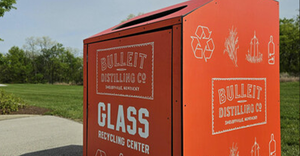Fertilizer Byproduct Creates Alternative Fuel
What began as a way to transform manure into fertilizer has created a byproduct that can be utilized as an alternative fuel.
Clearwater, Fla.-based MagneGas Corp., a technology company, discovered that through submerged plasma arc gasification various waste liquids can create fuel through two methods. In gasification mode, inputs can include transmission fluid, automotive fluid, diesel, soybean oil, vegetable oil, and palm oil. In sterilization mode, inputs can include leachates, sewage, sludge, industrial waste, medical waste and manure.
Waste360 recently sat down with Luisa Ingargiola, chief financial officer for MagneGas, to discuss the MagneGas2 alternative fuel and the company’s hopes to burn it with less efficient fuels and wastes resulting in improved emissions in the future.
Waste360: What is the process or technology behind creating the fuel?
Luisa Ingargiola: The submerged plasma arc gasification is a patented technology that was originally conceived to safely transform manure into a usable fertilizer. Later, it was discovered that the gas byproduct produced can be used as a cleaner, safer and more efficient fuel than other industrial gas products currently available in the market.
Plasma-arc gasification technology can be used in either the gasification mode or the sterilization mode, each having its own benefits for the industrial gas market. In gasification mode, the technology takes renewable liquid wastes, such as readily available liquid feedstocks, soybean and other vegetable oils, converting them into a hydrogen-based gas alternative.
Waste360: What are the benefits of MagneGas?
Luisa Ingargiola: A few of the benefits of MagneGas include better solutions for waste management, water scarcity, renewable energy and industrial safety. Our technology converts waste into reusable energy and products for multiple functions.
In sterilization mode, it replaces the need to use limited freshwater resources through sterilizing waste water for agriculture and municipal services, potentially improving the health and environment of communities.
In gasification mode, MagneGas2 is the only renewable cutting fuel on the market that is made from waste and renewable fuels. For industrial gas workers, MagneGas2 reduces the risk of air toxicity, with less volatility than other gases, providing safer working environments.
The MagneGas fuel is currently being used by several major utility companies and manufacturing companies. The fuel is being used at a NASA facility for demolition and has been approved for use by the New York Fire Department. In addition, the company has sold its first Gasification system to a gas distribution company in Louisiana, and expects that system to be installed and operational this year.
Waste360: What are the challenges?
Luisa Ingargiola: Currently, our main challenge is breaking into the entrenched acetylene industrial gas market. For the last 40 years, acetylene has controlled the metal cutting and welding market. Although acetylene is inherently unstable and highly combustible, its control of the multi-billion dollar industry has remained unchallenged until our company’s inception.
Waste360: Waste360: In what ways can it be used?
Luisa Ingargiola: MagneGas2 can be used in acetylene replacement, metalworking, brazing, metal cutting, metal heating and welding. In sterilization mode, our nutrient-rich output can be used in irrigation, fertilizer, and home heating with some modification.
Waste360: What industries utilize it?
Luisa Ingargiola: We are able to service many industries and provide green solutions to previous waste and health concerns. We address sterilization issues in the industries of water management, medical waste, sewage, industrial waste and agriculture. In gasification mode, we access industries including the industrial gas market, welding, repairs, and metal cutting.
Waste360: What are the alternatives to MagneGas?
Luisa Ingargiola: Some competitors to MagneGas2 include acetylene and propane. In addition to its green qualities, MagneGas2 has a higher temperature than propane, acetylene, and the original MagneGas.
MagneGas2 cuts faster and cleaner with little to no slag and uses less oxygen than its competitors. With the ability to cut 2-inch steel at a rate of 18 inches per minute, the renewable gas is 38 percent faster than acetylene and 44 percent faster than propane. Additionally, MagneGas emits CO2 at a lower rate than all its competing gases.
Waste360: What is the future of this technology?
Luisa Ingargiola: We are working through verification for our latest utilization of MagneGas, Co-Combustion.
Co-Combustion is burning MagneGas2 with less efficient fuels and wastes resulting in improved emissions, improved efficiency and a dramatic reduction in CO2. Markets for Co-Combustion include coal, medical waste, incineration and heavy oils. We expect verification by the end of this year.
On a more global scale, we are looking into several different international markets which struggle with their waste management or looking for their own renewable source of energy.What began as a way to transform manure into fertilizer has created a byproduct that can be utilized as an alternative fuel.
About the Author(s)
You May Also Like


